
Sabut Urad Dal
Get Price Quote
100 Kilogram (MOQ)
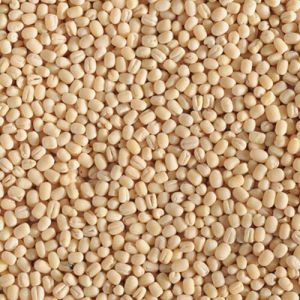
Urad Whole Without Skin
Get Price Quote
50 Kilogram (MOQ)
Best Deals from Sabut Urad Dal
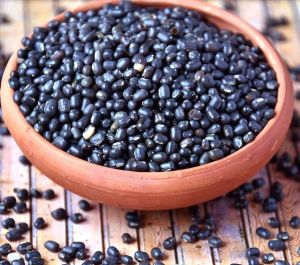
Whole Black Gram
130 - 160 Per Kilogram
10 Kilogram (MOQ)

Whole Black Urad Dal
55 - 80 Per Kilogram
100 Kilogram (MOQ)

Whole Urad Dal
80 - 120 Per Kilogram
1 Ton (MOQ)

White Urad Dal
Get Price Quote
10 Ton (MOQ)

Urad Dal whole
100 - 105 Per Kilogram
TATA Sampann - Urad Dal Whole Unpolished

White Urad Dal
80 - 150 Per
1 Ton (MOQ)

White Urad Dal
Get Price Quote

White Split Urad Dal
50 - 70 Per Kilogram
100 Metric Ton (MOQ)
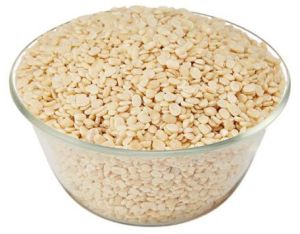
Urad Dal
Get Price Quote
Urad dal is also known as Black Gram. Black Gram contains essential minerals such as magnesium, iron, potassium, phosphorus and calcium. It also has a high iron content. This helps in increasing the overall energy levels in your body and keeps you active. Health Benefits : Improves Digestion Protects Heart Boosts Energy Improves Bone Health Strengthens Nervous System

Split White Lentils
Get Price Quote
Split white lentils is know as Vigna mungo, Split white lentils (not to be confused with the much smaller true black lentil white lentil, black matpe bean, is abean grown in Indian subcontinent. It, along with the mung bean, was placed inPhaseolus, but has since been transferred to Vigna. At one time it was considered to belong to the same species as the mung bean. The product sold as white lentils " is usually the whole urad bean or urad dal. The product sold as "white lentil" is the same lentil with the black skin removed. Split white lentils originated in India, where it has been in cultivation from ancient times and is one of the most highly prized pulses of India and Pakistan. The coastal Andhra region in Andhra Pradesh is famous for Split white lentils after paddy. The Guntur District ranks first in Andhra Pradesh for the production of Split white lentils . Split white lentils has also been introduced to other tropical areas mainly by Indian immigrants. It is an erect, suberect or trailing, densely hairy, annual herb. The tap root produces a branched root system with smooth, rounded nodules. The pods are narrow, cylindrical and up to six cm long. It is largely used to make dal from the whole or split, dehusked seeds. The bean is boiled and eaten whole or, after splitting, made into dal; prepared like this it has an unusual mucilaginous texture. It is also extensively used in South Indian culinary preparations. Urad Dal is one of the key ingredient in making the Idli-Dosa batter, where one part of Urad Dal is mixed with Three or Four parts of Idli Rice to make the batter. Also the dough for Medu Vada or Udid Vada is made from soaked batter and deep fried in cooking oil. The dough is also used in making Paapad, notably the South Indian version known as Appalam and Papadum, in which white lentils are usually used. It is nutritious and is recommended for diabetics, as are other pulses. It is very popular in the Punjabi cuisine, as an ingredient of dal makhani. In Bengal it is made as a preparation called Biulir Dal. In Rajasthan, It is used to prepare dal which is especially consumed with "Bati". It is used in traditional Indian(Ayurveda) medicine. Pharmacologically, extracts have demonstrated immunostimulatory activity in rats.In medieval times, this bean was used in making crucibles impermeable. Split white lentils is an erect, fast-growing annual, herbaceous legume reaching 30-100 cm in height. It has a well-developed taproot and its stems are diffusely branched from the base. Occassionally it has a twining habit and it is generally pubescent. The leaves are trifoliate with ovate leaflets, 4-10 cm long and 2-7 cm wide. The inflorescence is borne at the extremity of a long (up to 18 cm) peduncle and bears yellow, small, papilionaceous flowers. The fruit is a cylindrical, erect pod, 4-7 cm long x 0.5 cm broad. The pod is hairy and has a short hooked beak. It contains 4-10 ellipsoid black or mottled seeds (Many Black Gram cultivars exist, each one adapted to specific environmental conditions. Early maturing, disease resistant and easily cultivated cultivars have been obtained Split white lentils resembles green gram with two main differences: the corolla of Split white lentils is bright yellow while that of Vigna radiata is pale yellow; Split white lentils pods are erect whereas they are pendulous for green gram. Split white lentils is somewhat more hairy than green gram; the white hilum also protrudes from the seed. Black gram is sown on heavier soils and green gram is sown on lighter soils Split white lentils seeds are mainly a staple food and the dehulled and split seeds (dhal in Hindi) are a common dish in South Asia. They can be ground into flour and used for making papadum, a typical Indian flat bread Seeds, sprouts and green pods are edible and much appreciated for their high digestibility and lack of flatulence induction The seeds are normally too expensive to be used as a feed, even in areas of primary production. The by-product of dhal processing (chuni or bran) constitutes about 15-20 % of the seed weight and comprises hulls, germs and broken seeds. Chuni is a potential feed resource and large quantities are available in India and other Southern Asian countries where black gram is a popular food. Split white lentils is also is grown for forage and hay Its crop residues are an important feed for livestock in some regions of India, for example Sandeep Saran. Fodder is derived mainly from the leaves and stems, but seeds, pods and pod husks are also used. Black Gram is usually fed to cattle as a fodder but the plant, the seeds and the by-products are also consumed by other species Black Gram can be used as cover crop and green manure It is often used as dry season intercrop in rice or wheat as it has a beneficial effect on soil nutrient status Black Gram, has a taproot. It is a, N-fixing legume that improves soil fertility and soil physical properties Its cultivation does not require N fertilization but N fixation is improved by inoculation with local rhizobium strains Black Gram is responsive to P (40 kg/ha) and K (30 kg/ha) and only needs rough tillage and one or two weedings . Black Gram can be used in intercropping systems with legume species such as groundnut and cajan pea (Cajanus cajan), industrial crops (cotton, sugarcane) and cereals (sorghum, pearl millet, finger millet) as the main crops It provides supplementary food to the farmers and nitrogen to the other crop. Associations with maize, groundnut or cajan pea can improve productivity of those crops by 42-53 % In the dry season it is often sole cropped on rice fallow, before and after rice planting The seeds are rich in protein (24-26 % DM) and starch (35 % DM) The fibre content is inconsistent, with crude fibre values in the 5-6 % DM range or higher than 14 % The major nutritional constraint with raw Black Gram seeds is their high content in condensed tannins and trypsin inhibitors.

Whole Urad Dal
Get Price Quote
To maintain optimum product environment, we use superior grade packaging material that is nontoxic. The labels on packs provide products details clearly and are smudge-proof. With the complete help and support of our team members, we have strictly followed Warehouse Management System that helps us in loading and unloading the products efficiently. Our machine cleaned whole urad dal is available in various packaging like 10kg, 20kg, 30kg, etc.

Washed Urad Dal
87 - 90 Per Kg

Urad Dal
80 - 120 Per Kilogram
Urad dal, also known as black gram or Vigna mungo, is our specialty. We take pride in offering the finest quality urad dal. Whether you’re a big company, a restaurant, or any other bulk buyer, we can supply large quantities to meet your needs. Trust us for the best taste, nutrition, and satisfaction! 🌟👨🍳👩🍳

ORGANIC URAD DAL SPLIT UNPOLISH (POTTU MINAPAPPU))(HAPPY FOODS)
110 Per kg
100 Kilogram (MOQ)
ORGANIC Minapappu benefits Black gram or urad dal holds a high protein value than most legumes. It is also an excellent source of dietary fiber, isoflavones, vitamin B complex, iron, copper, calcium, magnesium, zinc, potassium, phosphorus which offers a myriad of healing health benefits.

Whole Black Urad Dal
50 Per Kilogram
100 Kilogram (MOQ)
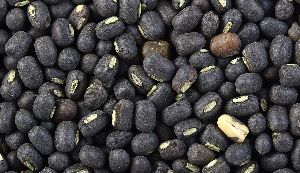
Black Gram
Get Price Quote
Owing to our excellent Rajasthan(India), we efficiently make on-time deliveries to the customers. Every item in our range is manufactured utilizing premium supplies sourced from renowned traders. Therefore, our products are reliable.

Urad Dal
Get Price Quote

Organic Urad Dal
Get Price Quote
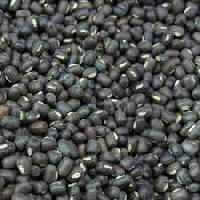
Black Gram
Get Price Quote
In order to pace with the technology, we have developed a payment procedure that allows us to make safe and secure transactions. Also, our system is verified by authority. Serving the customers with the exceptional range of Black Gram, we are well-recognized Suppliers in the field. We offer clean and impurity free black gram in various packaging like 1kg, 2kg, 5kg, 10kg, etc.

White Urad Dal
55 - 75 Per Kilogram
25 Kilogram (MOQ)

Urad Dal
Get Price Quote
We, as a main Supplier and Exporter, present Urad Dal. It is purchased from the vendors who consistently deliver unconditional quality. It is renowned for its superior aroma and high nutrition value. We make it available at reasonable rates in safe packages. It is available for our treasured customers at cost effective rates. Get this immaculate quality on offer delivered at your doorstep.

Black Urad Dal
Get Price Quote
Our organization is renowned as reliable distributor in the industry and based in the well-connected state of Tamil Nadu(India). As our payment methods are practical and convenient, we are highly recommended by the clients. We provide option to pay in cash as well as through bank transfer.
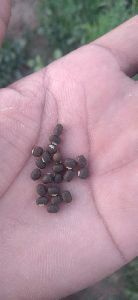
Black Gram
28,000 - 32,000 Per 400kgs
I am a farmer and cultivated the blackgam now the harvesting is in progress and expecting 400 to 500 kgs which I want to sell in good price

Urad Dal
Get Price Quote

Split Urad Dal
Get Price Quote
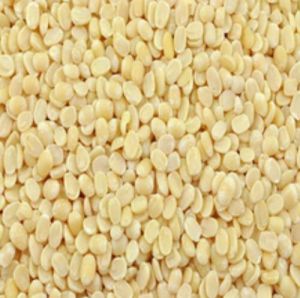
Urad Dal
80 - 90 Per Kilogram
1 Ton (MOQ)

Urad Dal
240 Per Kilogram

Whole Black Gram
Get Price Quote